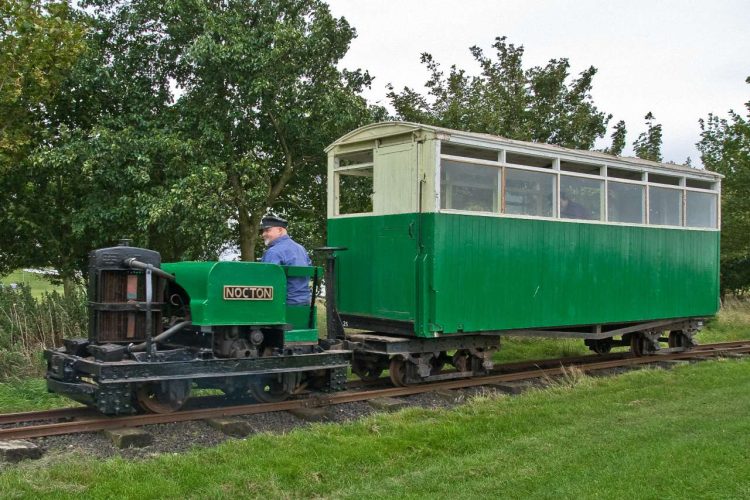After a 95-year wait, a unique carriage based at the Lincolnshire Coast Light Railway has been given nameplates.
Built-in 1927 on the Nocton Estates Railway which had 23 miles of narrow gauge tracks around Nocton Fen. The carriage operated from the former Nocton & Dunston station using the Lincoln to Sleaford line and also the west bank of the River Witham opposite Bardney which was the site of a conveyor bridge which would take delivery of sugar beet to be processed at the Bardney sugar factory.
The frames of the carriage were from First World War bogie wagons that would carry soldiers and supplies to the front-line trenches. It is thought that further components of the carriage were used from ambulance vans which would carry injured soldiers as both types were used on the Nocton railway.
The ‘Queen Mary' carriage had quite a different life, carrying shooting parties across the estate, growing potatoes and other supporting crops for Smiths Crisps, and was unusually fitted with comfy chairs, drink holders and gun racks. The carriage gained its regal ‘Queen Mary' nickname as estate workers saw those enjoying its comforts as being aloof.
When the line stopped operations during the late 1950s, the carriage was sold and was used as a taxi office and a scrap merchants office in the Sleaford and Boston areas. Once the Nocton system closed its rails and vehicles were sold to the Lincolnshire Coast Light Railway which is located at Humberston near Cleethorpes and made it the world's first-ever heritage railway built by enthusiasts using a greenfield site during the 1960s.

Lincolnshire Coast Light Railway was able to rescue the characterful carriage and move it to its site, in 1985 it was moved to storage at Burgh-le-Marsh when the line closed and was then moved in 1992 to the current location at Skegness Water Leisure Park where the historic railway reopened during 2009.
The carriage has seen substantial restorations completed alongside some modifications in order for it to be used by the public and to accommodate wheelchair access. The ‘Queen Mary' carriage saw it carry its first fare-paying passengers this year and has been extremely popular with visitors throughout the summer season.
Traditional signwriter, Tim Fry has made two nameplates at his workshop in Martin Dales and the carriage restoration team at the Lincolnshire Coast Light Railway are delighted to see the special carriage finally get her nameplates.
Tim said: “It's a pleasure to help these volunteers who are keeping alive an important part of Lincolnshire's heritage”.
Mick Allen, a long-term volunteer who worked on the ‘Queen Mary' at the Lincolnshire Coast Light Railway said:
“I'm thrilled with the nameplates Tim has made for the ‘Queen Mary'. I'll fit them during further restoration over the winter. They will help bring alive the story of this unique carriage”.
To find out more about the Lincolnshire Coast Light Railway, please visit: http://www.lclr.co.uk